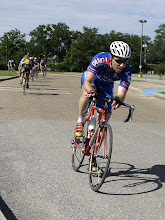Why in the world?
Why in the world would you forsake things that are not changeable so that you can maintain something that can be changed?
As I was mentioning in the previous post. Old Fit tends to drive New Fit for those that are unaware. Maybe this occurs because it's convenient. Personally, I think this occurs because of a lack of knowledge.
If such a great percentage of people are positioned poorly on their bike, why do people perpetuate errors?
Bike fit has to meet the needs of things that cannot change. Muscle physiology and joint biomechanics will not change. Now, I'm not talking about changes in muscle fiber type. I'm talking about how muscles generate force and the patterns that this force is generated in. Expressly, the length/tension curve.
Unfortunately, most bike fitters tend to fit their clients to meet the needs of their existing motor patterns. This is a neurophysiologic phenomenon. It resides in the brain. The brain on the other hand has one tremendous capacity that joints and muscles lack. It has the ability to learn and change drastically.
So, doesn't it seem appropriate to fit clients to their bikes in the manner that correlates to the rather static principles of muscle physiology and joint biomechanics so that their benefits are expressed to the greatest capacity and the risk of injury is limited as much as possible.
So what if the client doesn't "feel right" initially. The brain has the capacity to be plastic. It will change under the right circumstances and take advantage of the new environment!

